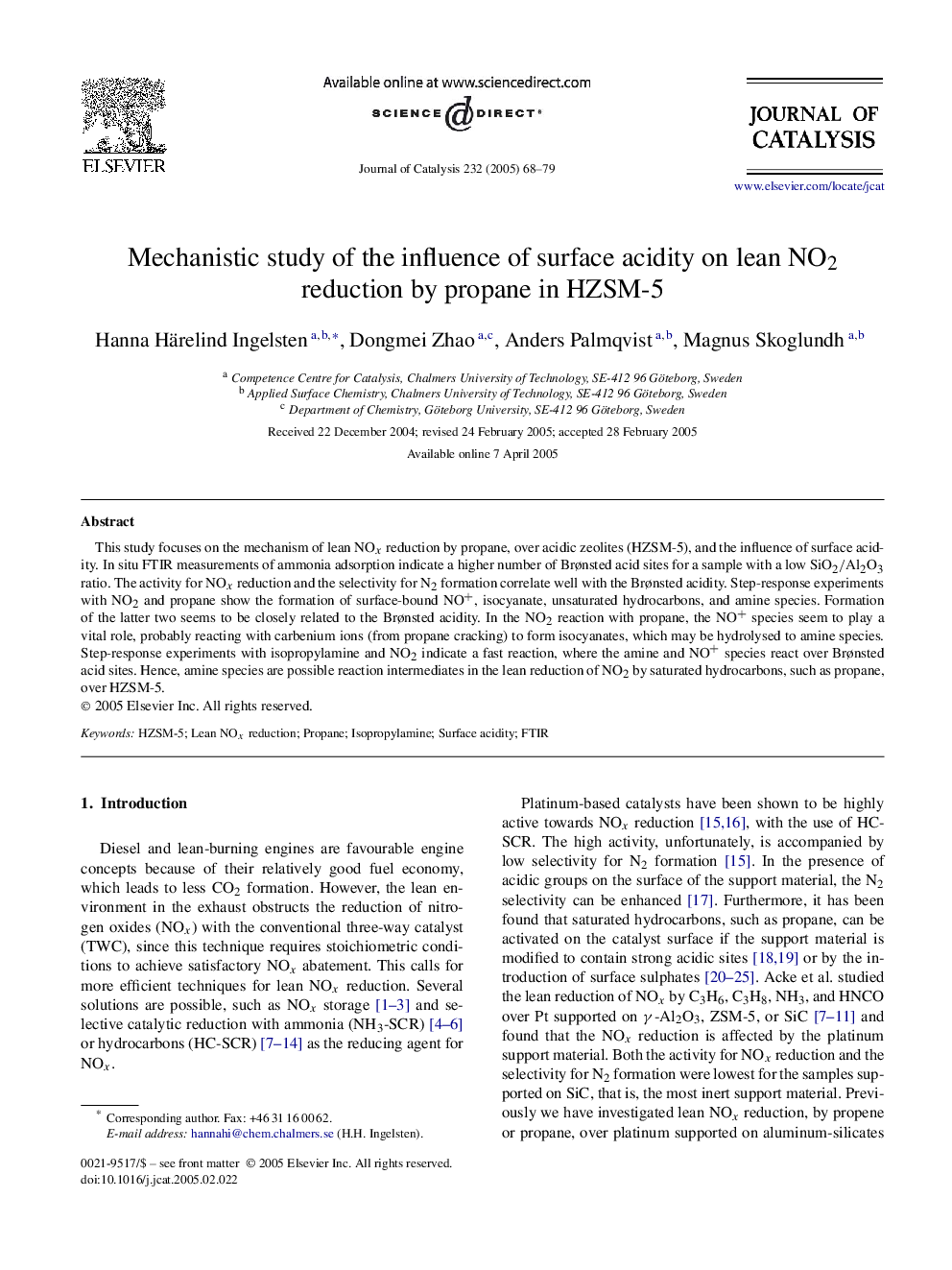| Article ID | Journal | Published Year | Pages | File Type |
|---|---|---|---|---|
| 10244831 | Journal of Catalysis | 2005 | 12 Pages |
Abstract
This study focuses on the mechanism of lean NOx reduction by propane, over acidic zeolites (HZSM-5), and the influence of surface acidity. In situ FTIR measurements of ammonia adsorption indicate a higher number of Brønsted acid sites for a sample with a low SiO2/Al2O3 ratio. The activity for NOx reduction and the selectivity for N2 formation correlate well with the Brønsted acidity. Step-response experiments with NO2 and propane show the formation of surface-bound NO+, isocyanate, unsaturated hydrocarbons, and amine species. Formation of the latter two seems to be closely related to the Brønsted acidity. In the NO2 reaction with propane, the NO+ species seem to play a vital role, probably reacting with carbenium ions (from propane cracking) to form isocyanates, which may be hydrolysed to amine species. Step-response experiments with isopropylamine and NO2 indicate a fast reaction, where the amine and NO+ species react over Brønsted acid sites. Hence, amine species are possible reaction intermediates in the lean reduction of NO2 by saturated hydrocarbons, such as propane, over HZSM-5.
Related Topics
Physical Sciences and Engineering
Chemical Engineering
Catalysis
Authors
Hanna Härelind Ingelsten, Dongmei Zhao, Anders Palmqvist, Magnus Skoglundh,
